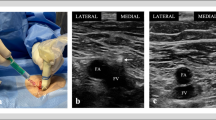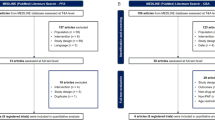Abstract
Transient cardiac standstill is a complementary procedure used with microsurgery to treat patients with particularly complex aneurysms, such as large or giant cerebral aneurysms. These procedures allow the aneurysms to be decompressed while maintaining a bloodless field and increased surgical exposure. Deep hypothermia combined with circulatory arrest provides cerebroprotection with optimal surgical conditions. However, its disadvantage is the relatively high risk of the procedure, which requires extensive expertise and infrastructure. Thus, its use is typically limited to patients with complex posterior circulation aneurysms. Adenosine-induced transient asystole is an easily applied technique in a variety of clinical situations. Its use requires minimal advanced preparation and no complex logistical coordination with other subspecialties. However, patient-specific dose-response relationships must be determined by exposure, so the relationship may not be known in an emergent situation. Persistent hypotension is a potentially major complication. Rapid ventricular pacing (RVP) has recently been reintroduced into cerebrovascular surgery. It is more predictable than adenosine in response time and, thus, can be used during unanticipated complications, such as aneurysmal rupture. It also induces a shorter period of hypotension compared with adenosine. However, RVP is more invasive and more complex from an anesthesia standpoint. Vascular neurosurgeons should be familiar with these techniques and know their applications and limitations.


Similar content being viewed by others
References
Aebert H, Brawanski A, Philipp A et al (1998) Deep hypothermia and circulatory arrest for surgery of complex intracranial aneurysms. Eur J Cardiothorac Surg 13:223–229
Aslami H, Juffermans NP (2010) Induction of a hypometabolic state during critical illness—a new concept in the ICU? Neth J Med 68:190–198
Ausman JI, Malik GM, Tomecek FJ et al (1993) Hypothermic circulatory arrest and the management of giant and large cerebral aneurysms. Surg Neurol 40:289–298
Bebawy JF, Gupta DK, Bendok BR et al (2010) Adenosine-induced flow arrest to facilitate intracranial aneurysm clip ligation: dose-response data and safety profile. Anesth Analg 110:1406–1411
Darsaut TE, Darsaut NM, Chang SD et al (2011) Predictors of clinical and angiographic outcome after surgical or endovascular therapy of very large and giant intracranial aneurysms. Neurosurgery 68:903–915, discussion 915
Griessenauer CJ, Poston TL, Shoja MM et al (2014) The impact of temporary artery occlusion during intracranial aneurysm surgery on long-term clinical outcome: part I. Patients with subarachnoid hemorrhage. World Neurosurg 82:140–148
Griessenauer CJ, Poston TL, Shoja MM et al (2014) The impact of temporary artery occlusion during intracranial aneurysm surgery on long-term clinical outcome: part II. The patient who undergoes elective clipping. World Neurosurg 82:402–408
Groff MW, Adams DC, Kahn RA et al (1999) Adenosine-induced transient asystole for management of a basilar artery aneurysm. Case report. J Neurosurg 91:687–690
Guinn NR, McDonagh DL, Borel CO et al (2011) Adenosine-induced transient asystole for intracranial aneurysm surgery: a retrospective review. J Neurosurg Anesthesiol 23:35–40
Hashimoto T, Young WL, Aagaard BD et al (2000) Adenosine-induced ventricular asystole to induce transient profound systemic hypotension in patients undergoing endovascular therapy. Dose-response characteristics. Anesthesiology 93:998–1001
Hindman BJ, Bayman EO, Pfisterer WK et al (2010) No association between intraoperative hypothermia or supplemental protective drug and neurologic outcomes in patients undergoing temporary clipping during cerebral aneurysm surgery: findings from the Intraoperative Hypothermia for Aneurysm Surgery Trial. Anesthesiology 112:86–101
Kahn RA, Marin ML, Hollier L et al (1998) Induction of ventricular fibrillation to facilitate endovascular stent graft repair of thoracic aortic aneurysms. Anesthesiology 88:534–536
Kubota H, Tanikawa R, Katsuno M et al (2013) Reconstruction of intracranial vertebral artery with radial artery and occipital artery grafts for fusiform intracranial vertebral aneurysm not amenable to endovascular treatment: technical note. Acta Neurochir (Wien) 155:1517–1524, discussion 1524
Lawton MT, Raudzens PA, Zabramski JM et al (1998) Hypothermic circulatory arrest in neurovascular surgery: evolving indications and predictors of patient outcome. Neurosurgery 43:10–20, discussion 20-11
Lawton MT, Quinones-Hinojosa A, Sanai N et al (2003) Combined microsurgical and endovascular management of complex intracranial aneurysms. Neurosurgery 52:263–274, discussion 274-265
Luostarinen T, Takala RS, Niemi TT et al (2010) Adenosine-induced cardiac arrest during intraoperative cerebral aneurysm rupture. World Neurosurg 73:79–83, discussion e79
Mack WJ, Ducruet AF, Angevine PD et al (2007) Deep hypothermic circulatory arrest for complex cerebral aneurysms: lessons learned. Neurosurgery 60:815–827, discussion 815-827
McDougall CG, Spetzler RF, Zabramski JM et al (2012) The Barrow Ruptured Aneurysm Trial. J Neurosurg 116:135–144
Molyneux AJ, Kerr RS, Yu LM et al (2005) International subarachnoid aneurysm trial (ISAT) of neurosurgical clipping versus endovascular coiling in 2143 patients with ruptured intracranial aneurysms: a randomised comparison of effects on survival, dependency, seizures, rebleeding, subgroups, and aneurysm occlusion. Lancet 366:809–817
Molyneux AJ, Kerr RS, Birks J et al (2009) Risk of recurrent subarachnoid haemorrhage, death, or dependence and standardised mortality ratios after clipping or coiling of an intracranial aneurysm in the International Subarachnoid Aneurysm Trial (ISAT): long-term follow-up. Lancet Neurol 8:427–433
Nguyen HP, Zaroff JG, Bayman EO et al (2010) Perioperative hypothermia (33 degrees C) does not increase the occurrence of cardiovascular events in patients undergoing cerebral aneurysm surgery: findings from the Intraoperative Hypothermia for Aneurysm Surgery Trial. Anesthesiology 113:327–342
Patterson RH Jr, Ray BS (1962) Profound hypothermia for intracranial surgery: laboratory and clinical experiences with extracorporeal circulation by peripheral cannulation. Ann Surg 156:377–393
Ponce FA, Spetzler RF, Han PP et al (2011) Cardiac standstill for cerebral aneurysms in 103 patients: an update on the experience at the Barrow Neurological Institute. Clinical article. J Neurosurg 114:877–884
Powers CJ, Wright DR, McDonagh DL et al (2010) Transient adenosine-induced asystole during the surgical treatment of anterior circulation cerebral aneurysms: technical note. Neurosurgery 67:461–470
Richards PG, Marath A, Edwards JM et al (1987) Management of difficult intracranial aneurysms by deep hypothermia and elective cardiac arrest using cardiopulmonary bypass. Br J Neurosurg 1:261–269
Rothoerl RD, Brawanski A (2006) The history and present status of deep hypothermia and circulatory arrest in cerebrovascular surgery. Neurosurg Focus 20, E5
Saldien V, Menovsky T, Rommens M et al (2012) Rapid ventricular pacing for flow arrest during cerebrovascular surgery: revival of an old concept. Neurosurgery 70:270–275
Schebesch KM, Proescholdt M, Ullrich OW et al (2010) Circulatory arrest and deep hypothermia for the treatment of complex intracranial aneurysms—results from a single European center. Acta Neurochir (Wien) 152:783–792
Solomon RA, Smith CR, Raps EC et al (1991) Deep hypothermic circulatory arrest for the management of complex anterior and posterior circulation aneurysms. Neurosurgery 29:732–737, discussion 737-738
Spetzler RF, Hadley MN, Rigamonti D et al (1988) Aneurysms of the basilar artery treated with circulatory arrest, hypothermia, and barbiturate cerebral protection. J Neurosurg 68:868–879
Spetzler RF, McDougall CG, Albuquerque FC et al (2013) The Barrow Ruptured Aneurysm Trial: 3-year results. J Neurosurg 119:146–157
Taylor CL, Selman WR (1998) Temporary vascular occlusion during cerebral aneurysm surgery. Neurosurg Clin N Am 9:673–679
Uihlein A, Theye RA, Dawson B et al (1960) The use of profound hypothermia, extracorporeal circulation and total circulatory arrest for an intracranial aneurysm. Preliminary report with reports of cases. Proc Staff Meet Mayo Clin 35:567–576
Uihlein A, MacCarty CS, Michenfelder JD et al (1966) Deep hypothermia and surgical treatment of intracranial aneurysms. A five-year survey. JAMA 195:639–641
Wang H, Olivero W, Wang D et al (2006) Cold as a therapeutic agent. Acta Neurochir (Wien) 148:565–570, discussion 569-570
Woodhall B, Sealy WC, Hall KD et al (1960) Craniotomy under conditions of quinidine-protected cardioplegia and profound hypothermia. Ann Surg 152:37–44
Conflict of interest
The authors have no conflicts of interest to disclose.
Author information
Authors and Affiliations
Corresponding author
Additional information
Comments
Ernst J. Delwel, Rotterdam, The Netherlands
This is an interesting and instructive article on three techniques available for temporary standstill in cerebrovascular surgery. The advantages and drawbacks are well described.
RVP has recently been reintroduced after being abandoned in 1971 and seems to be the most predictable and probably the safest of the three described techniques. However, experience with RVP is limited and requires preoperative preparation and increases the anesthetic complexity.
The described techniques are particularly useful in cases of complex or giant aneurysms in which proximal control of the aneurysm by temporary clipping of the parent vessel is not feasible.
The authors claim that temporal clipping of the parent vessel can potentially injure the vessel, resulting in dissection, stroke, or even vessel rupture. Recommendations for estimating the risk of occurrence of such a complication are not provided in the article.
Rights and permissions
About this article
Cite this article
Rangel-Castilla, L., Russin, J.J., Britz, G.W. et al. Update on transient cardiac standstill in cerebrovascular surgery. Neurosurg Rev 38, 595–602 (2015). https://doi.org/10.1007/s10143-015-0637-z
Received:
Revised:
Accepted:
Published:
Issue Date:
DOI: https://doi.org/10.1007/s10143-015-0637-z




